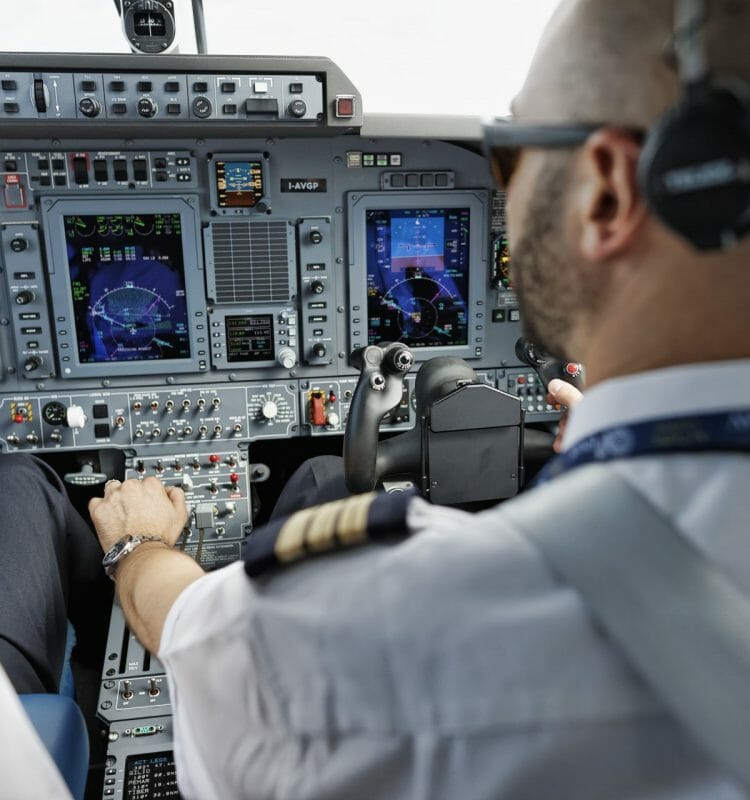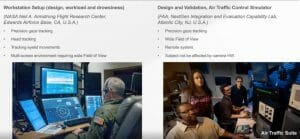EN


While the industry is in exploratory stages of implementing pilot monitoring systems for safer flights, we have seen several instances where researchers are using eye tracking to understand the state of the pilot.
Pictured on the left is from the NASA Neil Armstrong Flight Center in California. There, eye tracking is used to help the workstation design through analysis of workload and drowsiness. In this study, they needed precision gaze tracking, head tracking and eyelid movement tracking across four screens – which required a wide field of view.

Another setup pictured on the right is from the Federal Aviation Administration, Next Generation Integration and Evaluation Capability Lab in Atlantic City. Smart Eye Pro is deployed in air traffic control simulators to test and validate new functions developed for the ATC user interface. Precision gaze tracking is required, but the measurements have to be equally accurate across several screens. The FAA also requires remote trackers to avoid unwanted influence on the study results from using a variable tracking device.
Piloting an aircraft can be mentally challenging: pilots and copilots have to process an enormous quantity of visual, acoustic and spatial information while in flight. Constantly looking at the numerous instruments in the cockpit is a strenuous task, as pilots must check the correct indicators during a maneuver – often in a specific order.
This scanning of the flight systems is something that pilots internalize during their training. But even for experienced instructors, it is hard to judge whether a student pilot is looking at the right instruments at the crucial moment. Now, in collaboration with Swiss International Air Lines, NASA and other partners, researchers led by ETH Zurich have used eye-tracking technology for the first time to understand how pilots monitor the automatic systems of a modern passenger aircraft.
Using Smart Eye Pro eye-tracking software in their pilot training tool iAssyst, this allows instructors to analyse the gaze behaviour of student pilots in the cockpit. (Source: ETH Zurch, Tracking the Eye of the Pilot)
The University of the German Armed Forces had a use case involving understanding pilot performance, specifically workload in the cockpit. The study group has designed a system that uses eye tracking data, speech and flight control inputs, to estimate the current activity and workload of the crew.
As a second step, an adaptive associate system, or artificial crew member, uses the rated workload information to automatically support the crew in optimizing their activity and to mitigate high workload. It was also important for this customer that the eye checker captured the necessary gaze data, so a high performance eye tracker was deployed that provided a large field of view, high data availability and live data forwarding.
In addition, the eye tracker was required to gather synchronized data from multiple pilots. To achieve this, the university is working with several four-camera Smart Eye Pro systems, in both fixed wing and rotary wing simulators.
Interested in eye tracking for research? Download our Comprehensive Guide to Eye Tracking Technology for the Aviation Industry here, or contact us today to schedule a demo!
